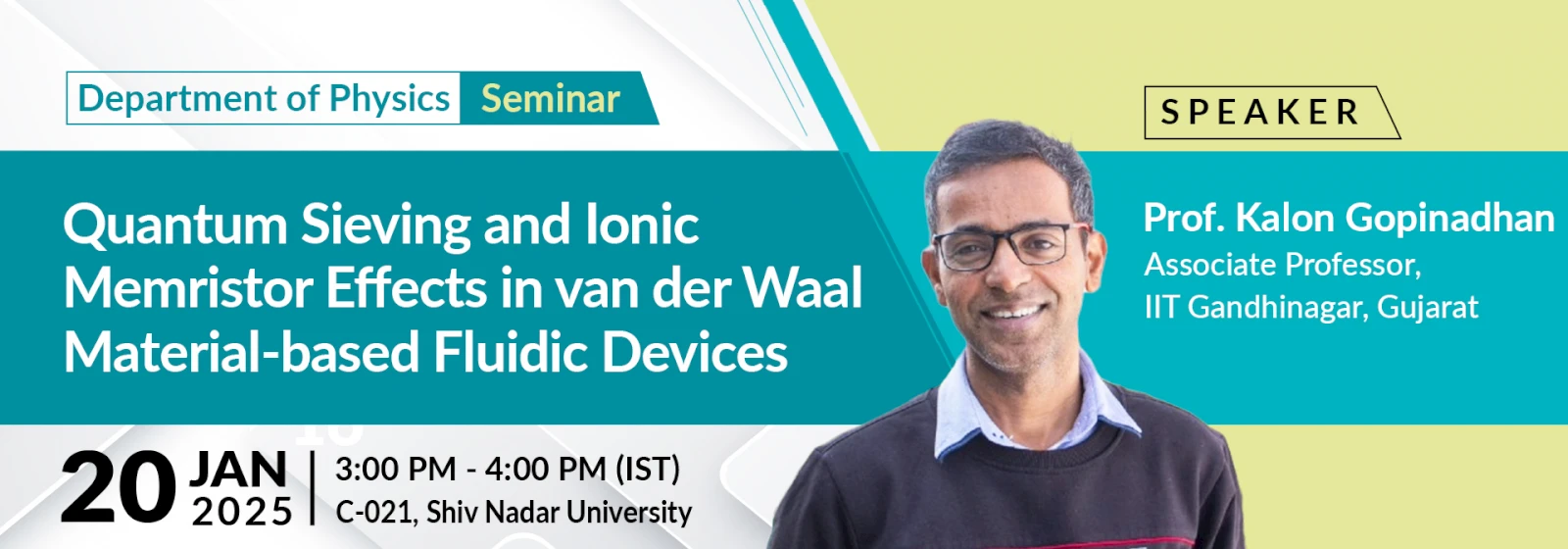Quantum Sieving and Ionic Memristor Effects in van der Waal Material-based Fluidic Devices
Abstract:
As the demand for nuclear energy grows, enriching deuterium from hydrogen mixtures has become more important. However, traditional methods are either very energy-intensive because they require extremely cold temperatures, or they don’t separate deuterium (D2) from regular hydrogen (H2) very well, with a D2/H2 selectivity of about ∼0.71. To achieve efficient deuterium separation at room temperature, we need materials with very tiny spaces, on an atomic scale. For the first time, we’ve successfully created a material with spaces just about ∼2.1 Å (angstroms) wide, which is similar in size to the wavelength of hydrogen isotopes at room temperature. This allows for efficient deuterium separation, with a much higher D2/H2 selectivity of ∼2.20, meaning the material can separate deuterium from hydrogen much more effectively at room temperature. The smaller deuterium molecules are more likely to pass through these tiny spaces, showing that quantum effects play a key role in this process. In contrast, a material like graphene oxide, with larger spaces (around 4.0 Å), only shows a lower D2/H2 selectivity of ∼1.17, indicating weaker quantum effects. This discovery suggests that materials with very small, atomic-scale spaces could be key to efficient separation of hydrogen isotopes at room temperature [1].
Memristors that mimic brain functions are crucial for energy-efficient neuromorphic devices. Ion channels that emulate biological synapses are still in the early stages of development, especially the tunability of memory states. Here, we demonstrate that cations such as K+, Na+, Ca2+, and Al3+ intercalated in the interlayer spaces of vermiculite, result in highly confined channels of size 3-5 Å. They host exotic memristor properties through ion exchange dynamics, even at high salt concentrations of 1 M. The bipolar memristor characteristics observed are tunable with frequency, geometric asymmetry, ion concentration, and intercalants. Notably, we observe polarization- flipping memristor behavior in two cases: one with Al3+ ions and another with devices having a geometric asymmetry ratio greater than 15. This inversion is attributed to the over-screening of counter-ions due to their accumulation at the channel entrance. Our results suggest that ion exchange dynamics, ion-ion interactions, and ion accumulation/depletion mechanisms, particularly with multivalent ions, can be harnessed to develop advanced memristor devices [2].
[Reference]
1. Saini Lalita, Rathi Aparna, Kaushik Suvigya, Li-Hsien Yeh and Kalon Gopinadhan, Room-temperature Deuterium separation in van-der Waals gap engineered vermiculite quantum sieves (Under Review).
2. Dhal Biswabhusan, Puzari Animesh, Li-Hsien Yeh, Kalon Gopinadhan. Angstrom Scale Ionic Memristors’ Engineering with van der Waals Materials: A Route to Highly Tunable Memory States. ACS Appl. Mater. Interfaces 16, 69556–69563 (2024).
Memristors that mimic brain functions are crucial for energy-efficient neuromorphic devices. Ion channels that emulate biological synapses are still in the early stages of development, especially the tunability of memory states. Here, we demonstrate that cations such as K+, Na+, Ca2+, and Al3+ intercalated in the interlayer spaces of vermiculite, result in highly confined channels of size 3-5 Å. They host exotic memristor properties through ion exchange dynamics, even at high salt concentrations of 1 M. The bipolar memristor characteristics observed are tunable with frequency, geometric asymmetry, ion concentration, and intercalants. Notably, we observe polarization- flipping memristor behavior in two cases: one with Al3+ ions and another with devices having a geometric asymmetry ratio greater than 15. This inversion is attributed to the over-screening of counter-ions due to their accumulation at the channel entrance. Our results suggest that ion exchange dynamics, ion-ion interactions, and ion accumulation/depletion mechanisms, particularly with multivalent ions, can be harnessed to develop advanced memristor devices [2].
[Reference]
1. Saini Lalita, Rathi Aparna, Kaushik Suvigya, Li-Hsien Yeh and Kalon Gopinadhan, Room-temperature Deuterium separation in van-der Waals gap engineered vermiculite quantum sieves (Under Review).
2. Dhal Biswabhusan, Puzari Animesh, Li-Hsien Yeh, Kalon Gopinadhan. Angstrom Scale Ionic Memristors’ Engineering with van der Waals Materials: A Route to Highly Tunable Memory States. ACS Appl. Mater. Interfaces 16, 69556–69563 (2024).
All are cordially invited.

Share this: